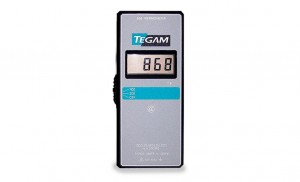RTD Thermometers: Reading Temperature
已发布 一月 25, 2019 由 Advanced Energy Editor
Reading Temperature
RTD, PRTD, PT100: What’s the Difference?
Let TEGAM Explain:
An RTD is a Resistance Temperature Detector. Resistance Temperature Detectors (RTD) use the physical properties of metals where the resistance changes proportionally with temperature. This change is much more linear than a thermocouple. The resistance change is defined by the composition of the device’s metal properties and purity.
A subset of Resistance Temperature Detectors is made of platinum. Platinum Resistance Detectors are referred to by the acronym PRTD. A Platinum Resistance Temperature Detector with a nominal resistance of 100 ohms is a further subset of the RTD that is known as PT-100.
View TEGAM RTD Thermometers HERE
The majority of RTDs are made from pure platinum. The element platinum has a near linear curve, a wide temperature range and very good stability over its working temperature range of -200 to +550°C. Platinum RTDs are available with resistance ranges from 50 ohms to over 1000 ohms. High resistances offer more resistance change with temperature for better resolution. Other metals, such as Nickel, provide more resistance change with temperature (e.g., 0.00672 ohm/ohm/°C). The element copper is often used in electric motors where 10 ohms of the winding wire is tapped and measured.
If you need precision and high resolution for an application, use a high resistance PRTD as opposed to other metals. Special-purpose cryogenic platinum RTDs made from proprietary polymers are available for very cold applications.
.jpg?lang=en-US)
TEGAM Model 868 RTD Thermometer
The “Curve” of the RTD is defined by two parameters
- The Resistance at 0°C
- The slope (or alpha) of the resistance from 0 to 100°C which is referred to as the alpha value (Note: The alpha is the average slope from 0 to 100°C)
For example: One of the most common RTDs is 100 ohms at zero degrees C with an alpha of 0.00385 ohms/ohm/degree C.
RTDs are made from various metals but the most common is Platinum (PRTD). The oldest Alpha is 0.00385 which was as pure as they could get platinum in the 19th century. Today pure Platinum has an Alpha 0.00392. You can use the Callendar-Van Dusen equation to get a close curve fit or higher-level polynomials for more accurate readings. (A 20th order polynomial is used for the most accurate curve fit.) Most manufacturers of elements also publish the curve or provide coefficients for curve fit equations.
Since an RTD is a resistance change, a constant current is applied. Standard 3 or 4-wire voltage measuring techniques can be used with ordinary copper wire to measure the voltage across the RTD. To reduce self-heating errors the current should be very small and pulsed.
Platinum and Nickel RTD elements are available in either wire-wound bobbins encased in either ceramic, glass, or thin-film elements on ceramic carriers. Thin-film RTD’s are more resistant to shock and vibration than wire-wound detectors. Both Nickel and Platinum RTDs exhibit excellent long-term stability. Thin-film devices typically are used encased in metal or ceramic tubes to protect them from the elements. They are also much smaller than wire-wound RTDs. The most accurate design is a strain-free wire-wound element, but it is also the least rugged design.
See TEGAM RTD Temperature Probes Here
Platinum RTD accuracy has been defined IEC 60751 into 4 ranges
- AA ±0.10 @ 0°C ±(0.10 + 0.0017 T) over the range of 0 to 150°C
- A ±0.15 @ 0°C ±(0.15 + 0.002 T) over the range of -30 to 300°C
- B ±0.30 @ 0°C ±(0.30 + 0.005 T) over the range of -50 to 500°C
- C ±0.60 @ 0°C ±(0.60 + 0.01 T) over the range of -50 to 500°C
(T is the absolute value of temperature in °C)
RTD vs Thermocouple
The platinum RTD is one of the most popular temperature sensors used today. Its temperature range fits most industrial applications and its accuracy, stability and interchangeability are typically better than a thermocouple. A thermocouple is more rugged, less expensive, and goes to higher temperatures. A thermocouple also typically has a faster time response to temperature change than an RTD.
TEGAM offers a full line of RTD thermometers, RTD probes, Thermocouple thermometers and Thermistor Thermometers. The Temperature Probe Selection Guide will help you choose the right probe for your measuring task. TEGAM is proud to design and manufacture temperature measurement instrumentation in the USA for virtually any industry. TEGAM thermometers are used for various applications in Aerospace, Automotive, Plastics, Food, Pharmaceutical, Chemical Plants, Food Processing, and in many other industries.
Contact us to discuss your temperature instrumentation needs today!
